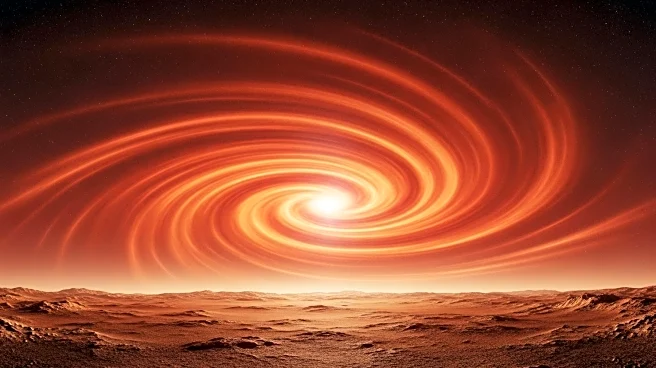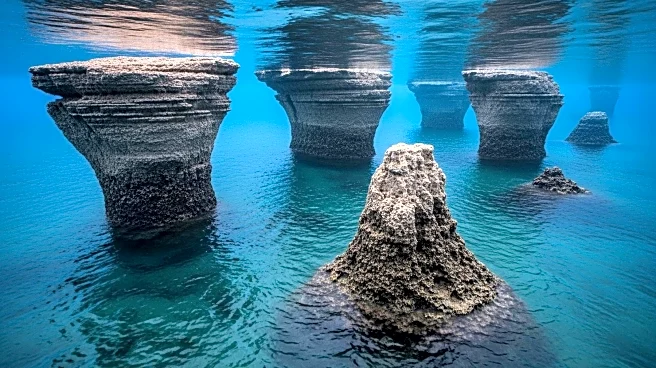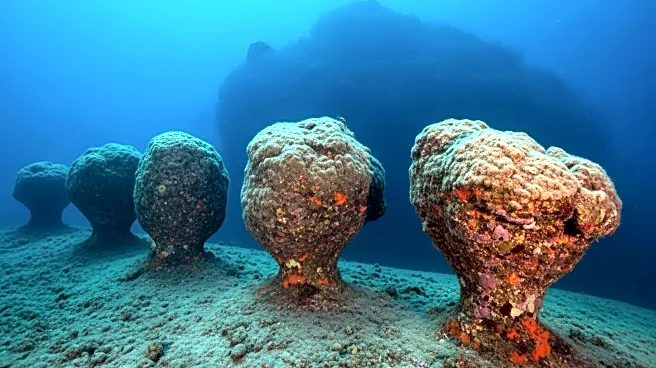What's Happening?
Recent research conducted by scientists from the University of Oxford, University of Leeds, and University College London has revealed that carbon plays a crucial role in the crystallization of Earth's core. The study suggests that Earth's core contains approximately 3.8% carbon, a higher percentage than previously believed, which is essential for the solidification process of the inner core. This discovery challenges previous assumptions about the core's composition and offers new insights into the dynamics of Earth's interior. The presence of carbon reduces the supercooling requirements for the core to solidify, which is vital for the generation of Earth's magnetic field. Without carbon, the crystallization of the core may not have occurred, potentially affecting the development of the magnetic field and the planet's ability to shield itself from harmful solar and cosmic radiation.
Why It's Important?
The findings have significant implications for understanding Earth's magnetic field, which is crucial for protecting the planet from solar and cosmic radiation. The solidification of the inner core drives the geodynamo process, responsible for generating the magnetic field. The presence of carbon in the core moderates the supercooling required for the inner core to solidify, aligning with Earth's historical conditions. This research not only enhances our understanding of Earth's past but also informs predictions about the core's future evolution. The study provides a rare glimpse into the chemistry of a region that cannot be directly accessed, offering insights into Earth's history and future.
What's Next?
The research team used computer simulations to explore the presence of elements such as silicon, sulfur, oxygen, and carbon in the core, assessing their influence on the freezing process. The study suggests that carbon is more abundant in Earth's core than previously thought, and its presence was vital for the inner core's formation. As scientists continue to explore these findings, new questions arise about how these insights might influence our understanding of Earth's magnetic field and its protective capabilities. The quest to unveil the mysteries of Earth's deep interior persists, promising to reshape our comprehension of the world beneath our feet.
Beyond the Headlines
The study reveals that the inner core formed without nucleation seeds, particles that typically aid in freezing processes. This insight is crucial, as previous simulations showed that potential nucleation seeds would have melted or dissolved in the core's conditions. The research offers a rare glimpse into the chemistry of Earth's deep interior, enhancing our understanding of Earth's past and informing predictions about the core's future evolution. The debate over when the inner core began to solidify continues, but with new knowledge about carbon's role, scientists are closer to understanding the core's composition and its implications for Earth's history.











